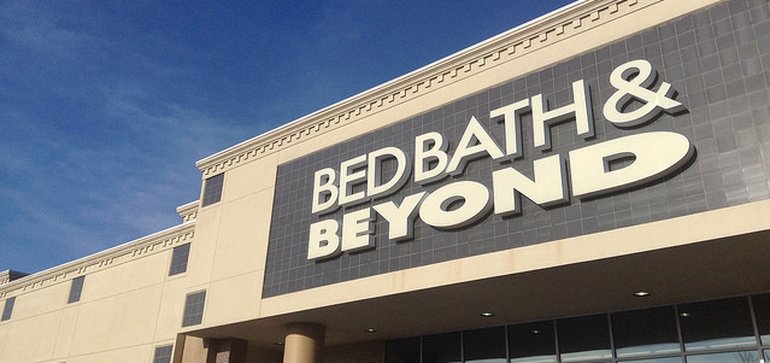Dive Brief:
- Bed Bath & Beyond on Wednesday reported that net sales in the 14 weeks of the fourth quarter rose 5.2% to about $3.7 billion; the year-ago quarter was just 13 weeks. Same-store sales in the quarter fell about 0.6%, due a decrease in the number of transactions in stores, partially offset by an increase in the average transaction amounts. Shares fell up to 18% in early trading Thursday after the company reported a weaker than expected forecast for the year.
- That included strong e-commerce sales growth, which mitigated the mid-single-digit percentage decline in stores, according to a company press release.
- For the 53 weeks of the full year, net sales rose 1.1% (from last year’s 52 weeks of sales) to about $12.3 billion. Same-store sales for the fiscal 2017 full year fell by 1.3%, and also included strong sales growth from customer-facing digital channels and physical store sales that declined in the mid-single-digit percentage range, the company said.
Dive Insight:
Bed Bath & Beyond continues to struggle, despite offering merchandise in a category that is otherwise enjoying healthy attention from consumers — products that go into furnishing and augmenting their homes. In a conference call on Wednesday, CEO Steven Temares sought to assure analysts that the retailer is working hard to differentiate its merchandise and position stores with “treasure hunt” potential.
The home goods retailer is also working to offer more “seasonal department commodity products like food and beverage, health and beauty care show deep value,” he also said, according to a transcript from Seeking Alpha.
Many of those are not only low-margin items to begin with, but that “commodity” aspect of much of the retailer’s offering is part of its essential problem. Simply too many of its goods can be easily found elsewhere, including at Amazon, whose convenience play, especially through Prime, handily beats Bed Bath & Beyond’s still developing e-commerce operations.
Its stores aren’t well positioned to fight that fight, either, warns GlobalData Retail Managing Director Neil Saunders. “Too many of Bed Bath & Beyond’s stores — especially older ones — are a mess,” he said in comments emailed to Retail Dive, calling stores “a hodge-podge of product, tightly crammed into a space that is largely devoid of inspiration.”
Hard-to-find product and poor customer service in what Saunders calls an “unpleasant” shopping experience doesn’t a “treasure hunt” make, he also said. “Many customers come into Bed Bath & Beyond on a mission with particular products in mind,” he said. “This means their shopping approach is focused, rather than leisurely or curious. Unfortunately, stores do not facilitate this. Nor do they stimulate or encourage such mission-based shoppers to casually browse and make impulse purchases.”
Indeed, the retailer’s growing digital sales (including a loyalty program that offers free shipping), its addition of lower-margin goods and the enduring popularity of its coupons is hitting margins. Gross margin for the quarter was 35.9% of net sales, down from 38% in the year ago period. That decrease as a percentage of net sales was primarily due to an increase in coupon expense, as both redemptions and the average coupon amounts rose, a merchandise margin decrease and an increase in net direct-to-customer shipping expense, CFO-treasurer Sue Lattmann told analysts.
“Profit is also affected by Bed Bath & Beyond’s discounting and its rather slapdash approach to coupons and vouchers,” Saunders said, suggesting that the company must do something about those popular coupons. “As much as we recognize this has played an important historical role in the company’s success, we also believe that its dependence upon it is now a symptom of a rather poor retail strategy and questionable execution.”


